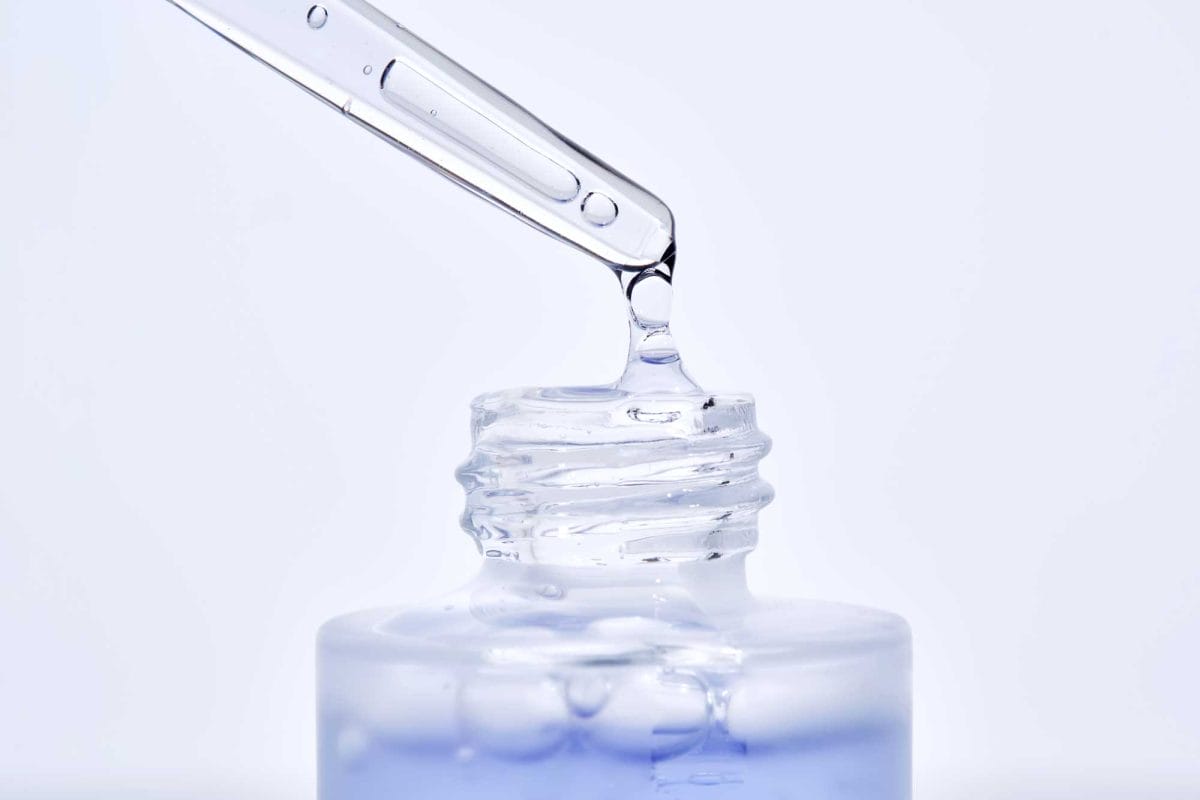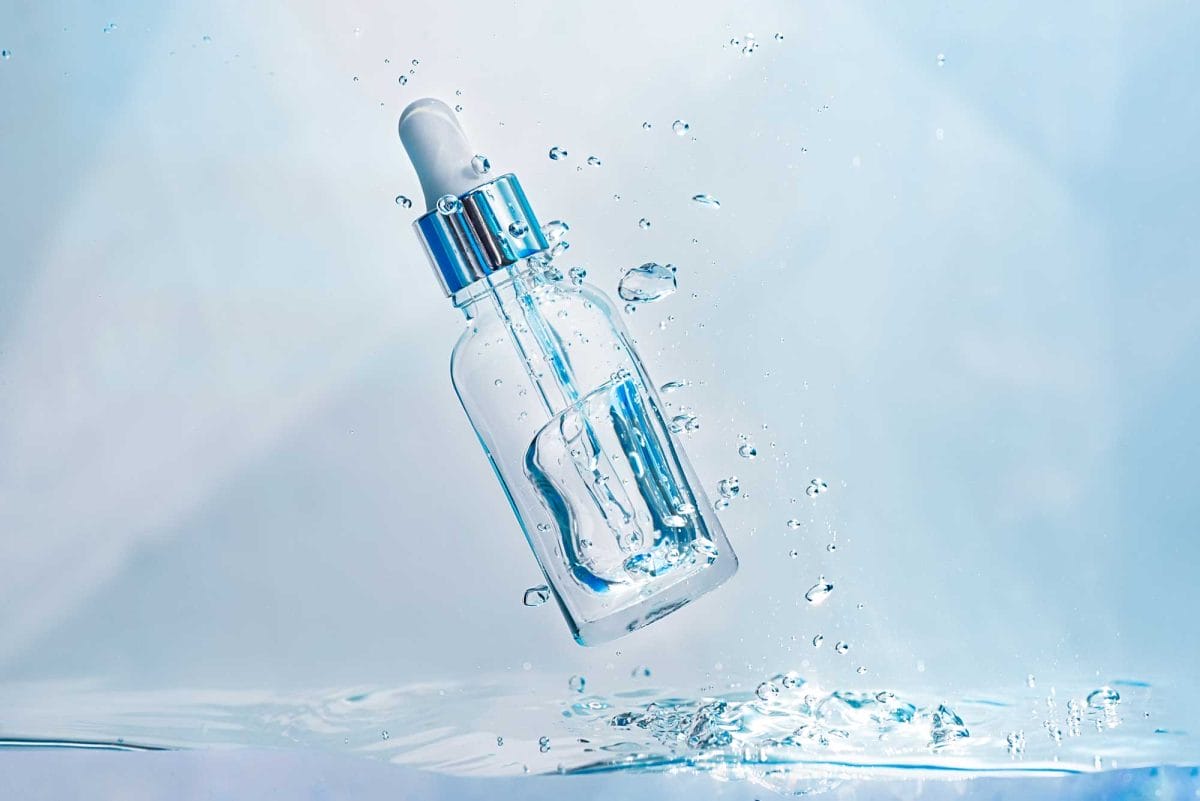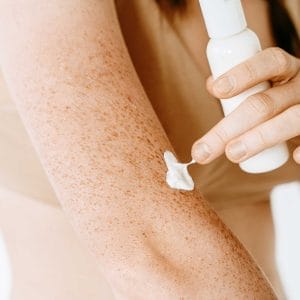Hyaluronic acid (HA) has earned a prominent place in skincare routines for its exceptional hydration capabilities. But while many skincare enthusiasts recognize the hydrating benefits, fewer realize how molecular size directly influences its effectiveness. Not all hyaluronic acids deliver equal results! The molecule’s size significantly affects whether it moisturizes the skin’s surface, penetrates deeper layers, or provides anti-aging benefits. In fact, a molecule’s size is so critical that understanding this aspect can determine whether a skincare routine succeeds or falls short.
Hyaluronic acid is naturally produced in our bodies. It’s abundant in the skin, joints, and eyes, keeping tissues hydrated, lubricated, and resilient. As we age, however, natural HA production declines—by approximately 50% by age 50—leading to dryness, loss of elasticity, and wrinkles. According to a study published in Dermato-Endocrinology, HA content in the skin drops dramatically with age, highlighting the importance of external supplementation through topical skincare products.
However, simply adding hyaluronic acid into skincare products isn’t enough. The key lies in molecular size. Hyaluronic acid molecules range from very large to extremely small, with sizes measured in kilodaltons (kDa). This variation significantly alters their ability to penetrate different skin layers. Larger molecules stay on the skin surface, providing immediate hydration and protection. Medium-sized molecules penetrate slightly deeper, delivering longer-lasting moisture. Small or low molecular weight hyaluronic acid can penetrate deeper into the dermis, stimulating cellular activity and collagen synthesis.
So why is this differentiation in molecular size crucial? Because the skin is a complex organ composed of multiple layers, each serving unique functions. The epidermis (the outermost layer) protects against environmental damage and maintains hydration. The dermis, beneath the epidermis, contains structural proteins like collagen and elastin, responsible for the skin’s elasticity and firmness. The size of the HA molecule directly determines which skin layer it affects, thus shaping its efficacy.
High Molecular Weight Hyaluronic Acid (1,000 kDa and above)
High molecular weight hyaluronic acid is the most common form found in moisturizers and serums. These large molecules remain on the skin’s surface, creating an effective hydrating barrier. This barrier prevents moisture loss by attracting and binding water molecules from the environment. The immediate benefit? Plumper, smoother-looking skin almost instantly. I personally love the feel of products with high molecular weight HA—it feels like my skin is drinking water!
Yet, high molecular weight HA does have limitations. While providing instant hydration and surface-level improvement, these molecules cannot penetrate deeply enough to affect structural changes or significantly reverse signs of aging. As a result, the anti-aging benefits are minimal. Products primarily using high molecular weight HA are ideal for immediate hydration, temporary smoothing of fine lines, and alleviating surface dryness.
Medium Molecular Weight Hyaluronic Acid (50-1,000 kDa)
Stepping down in molecular size, medium molecular weight hyaluronic acid penetrates deeper than its higher-weight counterpart. These mid-sized molecules reach into the epidermal layers, providing hydration that lasts beyond surface-level improvements. The penetration into superficial layers of the epidermis enhances skin elasticity and reduces surface wrinkles. Medium molecular weight HA strikes a balance, offering immediate hydration benefits with moderate, sustained moisturizing action.
Unlike the largest molecules, medium-sized HA has demonstrated the ability to slightly stimulate the skin’s natural hydration processes. It encourages cells in the epidermis to retain moisture more effectively over time. This action results in smoother, healthier skin texture. While the anti-aging potential is greater than high molecular weight HA, the effects remain somewhat limited. Medium molecular weight hyaluronic acid is best suited for consistent hydration and maintaining overall skin health, especially for younger or minimally aged skin.
Low Molecular Weight Hyaluronic Acid (less than 50 kDa)
Now, here’s where things get interesting! Low molecular weight hyaluronic acid has gained popularity for its deeper penetration capabilities. Because of its smaller molecular size, it reaches the dermis, where real anti-aging magic happens. At this deeper level, low molecular weight HA stimulates fibroblast activity—the cells responsible for producing collagen and elastin. As collagen production increases, skin structure improves, wrinkles diminish, and elasticity returns. This is precisely why skincare products designed for mature skin frequently feature low molecular weight hyaluronic acid.
Scientific studies support this. A notable research published in the Journal of Clinical and Aesthetic Dermatology showed that low molecular weight HA significantly improves skin elasticity and hydration at the deeper dermal layers compared to high molecular weight HA. Notably, consistent use can lead to noticeable improvements in firmness and wrinkle depth over weeks or months.
However, smaller isn’t always universally better. Low molecular weight hyaluronic acid sometimes causes mild irritation or sensitivity in extremely reactive or compromised skin. Since smaller molecules penetrate deeply, they’re more likely to provoke immune reactions in highly sensitive skin. Thus, careful consideration is necessary when selecting products with very small molecules, especially for sensitive skin types.
Ultra-Low Molecular Weight Hyaluronic Acid (below 10 kDa)
Ultra-low molecular weight HA is relatively new to the skincare industry, touted for its extraordinary ability to penetrate even deeper into the skin. These tiny molecules promise maximum absorption, reaching cellular levels previously unattainable with topical products. Theoretically, ultra-low molecular weight HA should amplify collagen stimulation, skin regeneration, and hydration at unprecedented levels.
Yet, research in this area remains somewhat limited. The potential benefits seem promising, but concrete clinical data on long-term use are sparse. Still, some dermatologists and researchers believe ultra-low molecular weight HA could redefine skincare by profoundly stimulating skin renewal processes. Until more evidence emerges, ultra-low molecular weight HA remains an exciting but somewhat speculative area of skincare science.
Choosing the Right Molecular Size for Your Skin
Selecting the right HA molecule size depends significantly on your skin type, age, and specific concerns. For those in their twenties or early thirties seeking surface hydration, high molecular weight HA is sufficient. However, anyone looking to address early signs of aging or maintain elasticity should consider medium-sized HA molecules. Mature skin, facing visible wrinkles and loss of firmness, benefits immensely from products featuring low molecular weight hyaluronic acid.
The molecular weight of specific skincare products typically comes from the manufacturers’ product descriptions, clinical studies, or technical datasheets provided by the brands themselves. For instance, companies like NIOD and SkinCeuticals openly detail the molecular sizes of hyaluronic acid in their formulations for transparency and marketing effectiveness.
Here’s how to know or verify the molecular weight of these recommended products:
- The Ordinary Hyaluronic Acid 2% + B5: Clearly states it combines low, medium, and high molecular weights, focusing mainly on surface hydration due to its predominantly high molecular weight content.
- La Roche-Posay Hyalu B5 Serum: Marketed explicitly as containing a blend of medium and high molecular weight HA, formulated to hydrate the epidermis and address early signs of aging.
- SkinCeuticals H.A. Intensifier: Specifically states it uses lower molecular weight HA molecules for deeper skin penetration, collagen synthesis, and firming effects, thus categorized under lower molecular weight HA.
- NIOD Multi-Molecular Hyaluronic Complex: Prominently advertised as having an extensive range of molecular sizes (from ultra-low to high), explicitly highlighting the ultra-low molecular weight molecules for advanced hydration and regeneration.
Manufacturers of premium skincare typically emphasize these molecular distinctions because they’re pivotal to product performance and consumer expectations.
Ideally, using products that combine multiple molecular sizes offers the best results. This layered approach allows for comprehensive hydration at all skin layers, from the surface to deeper structural layers. Several brands now create formulations specifically designed to deliver this broad-spectrum hydration.
Personally, I’ve found this combination approach remarkably effective. The blend ensures that my skin stays plump, hydrated, and elastic at every level.

Understanding Different Forms of Hyaluronic Acid in Skincare
When shopping for skincare products featuring hyaluronic acid, you’ve likely encountered terms like “hyaluronic acid,” “sodium hyaluronate,” or even more exotic variants like “hydrolyzed sodium hyaluronate.” It can certainly get confusing! Each form differs in molecular structure, penetration capabilities, and skin benefits, impacting effectiveness and suitability for different skin types and concerns. Let’s explore the major types clearly, simply, and effectively to help you make informed skincare choices.
Hyaluronic Acid (Pure Form)
Hyaluronic acid in its pure form naturally occurs in the body—especially in the skin, eyes, and joints. Chemically, pure hyaluronic acid molecules are larger and typically provide surface-level hydration when applied topically. Due to its larger molecular size, it creates an effective hydration barrier, attracting moisture from the environment and preventing transepidermal water loss. You’ll often find pure hyaluronic acid in moisturizing creams and hydrating serums. However, because of its large size, pure hyaluronic acid generally remains at the skin’s surface, unable to penetrate deeper into the epidermal or dermal layers.
Sodium Hyaluronate (Salt Form)
Sodium hyaluronate is a sodium salt derivative of hyaluronic acid. It’s created by extracting and stabilizing pure hyaluronic acid, resulting in smaller molecules and significantly better skin absorption. Because of its reduced molecular size and greater stability, sodium hyaluronate is widely preferred in skincare formulations, from serums to creams. It readily penetrates deeper into the skin layers, making it an ideal choice for longer-lasting hydration and more effective anti-aging results compared to pure hyaluronic acid. This enhanced penetration means sodium hyaluronate is more likely to stimulate skin cells responsible for hydration and collagen synthesis, effectively improving skin elasticity and reducing fine lines over time.
Hydrolyzed Hyaluronic Acid (Fragmented Form)
Hydrolyzed hyaluronic acid undergoes further processing through enzymatic or chemical breakdown of standard hyaluronic acid molecules. The resulting smaller fragments enable deeper penetration and absorption into the skin layers than either pure hyaluronic acid or sodium hyaluronate. Due to its tiny molecular size, hydrolyzed hyaluronic acid can effectively reach deeper epidermal and dermal layers, significantly boosting hydration, improving skin elasticity, and visibly reducing wrinkles with consistent use. You’ll commonly find hydrolyzed hyaluronic acid in anti-aging serums and advanced skincare formulations, often marketed specifically for mature skin types.
Hydrolyzed Sodium Hyaluronate (Ultra-Small Form)
This form represents the smallest molecular variant commonly found in skincare. Hydrolyzed sodium hyaluronate molecules are ultra-tiny, allowing for deep, efficient skin penetration and maximum absorption. Due to this ultra-low molecular weight, this form is exceptionally effective in stimulating collagen production and improving skin texture and elasticity at deeper skin layers. Hydrolyzed sodium hyaluronate provides intensive hydration, making it increasingly popular in high-performance serums targeting advanced anti-aging results, regeneration, and overall skin rejuvenation.
Cross-linked Hyaluronic Acid (Longer-lasting Form)
Cross-linked hyaluronic acid is chemically modified to form connections between individual HA molecules, creating a networked structure. This cross-linking technique results in a gel-like consistency, providing slower degradation and more sustained hydration. Often used in dermal fillers, cross-linked HA delivers longer lasting volumizing and plumping effects. However, increasingly, skincare products feature cross-linked hyaluronic acid to achieve prolonged hydration and temporary smoothing and filling effects when applied topically. Although primarily a surface-level hydrator, cross-linked HA can visually minimize fine lines and wrinkles through its sustained hydration effect.
Potassium Hyaluronate (Alternative Salt Form)
Potassium hyaluronate, another salt derivative of hyaluronic acid, shares similarities with sodium hyaluronate. The primary difference lies in their counter ions—potassium versus sodium—but in skincare, potassium hyaluronate is somewhat less commonly used. Nonetheless, this form offers similar penetration and hydration properties, attracting and retaining moisture effectively within the skin. While relatively rare, potassium hyaluronate may occasionally appear in specialty skincare products targeting intensive hydration.

Which Form Should You Choose?
Choosing the best form of hyaluronic acid for your skincare routine depends on your specific skin concerns and goals:
- Surface-Level Hydration: Choose pure hyaluronic acid or cross-linked HA for immediate, short-term hydration and plumping.
- Moderate Penetration and Hydration: Sodium hyaluronate offers effective hydration and moderate anti-aging benefits, suitable for maintaining healthy, hydrated skin.
- Deeper Skin Benefits and Anti-Aging: Hydrolyzed hyaluronic acid or hydrolyzed sodium hyaluronate are optimal for deeper hydration, enhanced skin elasticity, collagen production, and significant wrinkle improvement.
Most high-quality serums and moisturizers today combine multiple forms of HA, effectively targeting hydration at every skin level. Products featuring multiple HA types, such as Paula’s Choice Hyaluronic Acid Booster or NIOD Multi-Molecular Hyaluronic Complex, offer comprehensive, effective hydration and visible anti-aging results.
Ultimately, being knowledgeable about different hyaluronic acid forms enables smarter skincare choices. By aligning your skin concerns with the right hyaluronic acid variant, you’ll unlock greater skin improvements and healthier-looking results.
FAQs about Hyaluronic Acid Molecular Size
Does low molecular weight HA irritate sensitive skin?
Low molecular weight HA can occasionally irritate sensitive or reactive skin due to deeper penetration. Always patch-test and introduce slowly.
Can high molecular weight HA reverse wrinkles?
High molecular weight HA provides temporary hydration but doesn’t stimulate collagen production or significantly reverse wrinkles long-term.
Is medium molecular weight HA sufficient for anti-aging benefits?
Medium molecular weight HA offers moderate hydration and slight elasticity improvements but may not be adequate for deeper wrinkles.
Are HA serums with mixed molecular sizes beneficial?
Yes! Products featuring multiple molecular sizes typically provide superior hydration and comprehensive skincare benefits.
Is ultra-low molecular weight HA safe?
Ultra-low molecular weight HA is generally safe but requires further research to confirm its long-term efficacy and safety profile.
By carefully selecting the right molecular weight hyaluronic acid, you can dramatically enhance your skincare routine. The molecule size truly matters. Paying attention to this detail ensures you receive optimal hydration, targeted skin rejuvenation, and remarkable anti-aging results.




